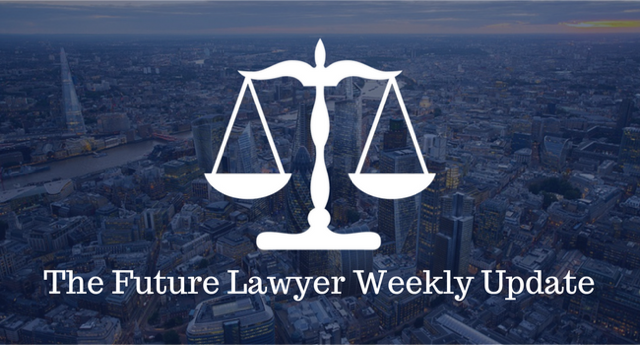
Managing Positivity and being Productive During the Lockdown
May 12, 2020
Reflection on the Treatment of Sexual Assault Victims in Turkey
May 12, 2020The round-up of the stories that a budding Student Lawyer should be aware of this week. Sign up here to get these updates in your inbox every week.
Supreme Court allow Appeal in Article 3 Case
AM (Zimbabwe) v Secretary of State for the Home Department [2020]
Reported by Jasmine Cracknell
The Supreme Court have allowed an appeal to the Upper Tribunal in the case of AM (Zimbabwe).
The unanimous decision, which was handed down on 29 th April, made it clear that the Court of Appeal should have followed Paposhvili v Belgium {2017], a European Court of Human Rights (ECtHR) case, which has become the new authority for
Article 3 cases relating to deportation.
The case of AM centres on the interesting question of whether seriously ill foreign nationals can rely on Article 3 of the Human Rights Act to prevent their deportation from the UK. In this case, AM, a Zimbabwean citizen, had been ordered to leave the UK after committing several serious offenses. AM is HIV positive and will not be able to access Eviplera, the drug preventing his relapse into full-blown AIDS, in Zimbabwe. He is therefore arguing that to deport him goes against Art 3, his right not to be subjected to torture or to inhuman or degrading treatment or punishment.
In coming to their decision to dismiss the case, the Court of Appeal followed an earlier House of Lords decision in N v Secretary of State for the Home Department [2005], but failed to properly interpret a recent ECtHR development in Paposhvili, the Supreme Court have held.
In N, the House of Lords found that sending a HIV positive foreign national back to their home country where there was insufficient treatment for the disease would not contravene Art 3 unless the case was ‘exceptional’. This has been the overarching authority on the matter since 2005, until Paposhvili.
Paposhvili widened the definition of what constitutes an exceptional case, stating that it can include a situation where there is a real risk of “a significant reduction in life expectancy”. In the present case, the Supreme Court held the Court of Appeal had mistakenly interpreted this to mean ‘the imminence of death’, and that, in fact, only a ‘substantial’ reduction in life expectancy would be sufficient to contravene Art 3. Lord Wilson said the Court of Appeal’s interpretation was ‘too much of a leap’.
AM’s case will now be heard on up-to-date evidence by the Upper Tribunal who will take the ECtHR’s decision in Paposhvili into account.
HSE: Criminal Investigation into Care Home Deaths
Watchdog may investigate coronavirus deaths
Reported by Ellena Mottram
Britain’s health and safety regulator is considering launching a criminal investigation after the deaths of more than 50 people in hospitals and care homes were been reported to the body.
At the time of writing the Health and Safety Executive (HSE) has received 54 formal reports of deaths in health and care settings. The reports have come from the official reporting process, specifically Reporting of Injuries, Diseases and Dangerous Occurrences.
In addition to the potential investigations being run by the HSE, which investigates the breaking of safety at work laws, it has been suggested that the failure to provide personal protective equipment may amount to corporate manslaughter. It appears that police forces are drawing up plans to deal with any criminal complaints which may be received.
A former chief crown prosecutor for north-west England has said that the failure to provide proper protection ‘needs a proper investigation and may meet the threshold for criminal sanction’. He highlighted that there ‘ought to be an investigation by either the HSE or police to identify whether the lack of PPE has caused somebody’s death.
Responsibility for investigation deaths of workers is a duty which is split between the HSE and the police. The HSE has the responsibility to investigate health and safety alleged offenses whilst more serious offenses such as corporate manslaughter are investigated by the police.
The HSE has stated that where ‘a worker has been diagnosed as having Covid-19 and there is reasonable evidence it was caused by exposure at work….and the worker dies as a result of occupational exposure to coronavirus’ the matter should be reported. At presents the reports which are being made are being processed whilst the investigation is initiated.
The report should be made within 10 days of the incident and where it is as a result of Covid-19 it should be reported as a death due to a biological agent using the ‘case of disease’ report form.
In terms of more serious criminal sanctions, a key questions to be asked is whether organizational and management failures has contributed to deaths. Alex Bailin who is an expert in corporate manslaughter laws has suggested NHS trusts, the Department of Health and other government departments could be considered criminal suspects and that there is reason to suspect serious high-level failures.
This is required under the offense. The guidance states that not only must there be a gross breach of the relevant duty of care, the failings of senior management must have formed a substantial element in the breach. These breaches at a senior level do not need to amount to a gross breach themselves as the liability decision looks at the failings of the organisation as a whole.
However, at the time of writing, no police for in England and Wales has commenced any investigation into either corporate manslaughter or gross negligence manslaughter in relation to a death from Covid-19.
You can find more here.
Data protection: Contact Tracing App
UK NHS contact tracing app
Reported by Laurence Tsai
Amidst the COVID-19 pandemic, various governments worldwide have rushed to introduce innovative technologies to mitigate the spread of the virus and the risk of further contamination. Following advice from the World Health Organisation, contact tracing is an essential ingredient countries should implement in the battle against the virus. For instance, Singapore’s contact tracing app, “TraceTogether”, which was launched in March 2020 already has 1.4m users and its contact tracing approach played a significant role in its efforts to contain the spread of the virus within the country. Further, major corporations have established unprecedented partnerships and have dedicated their vast resources in developing similar technologies.
While the UK remains in lockdown, the Government has sought to find methods of easing restrictions without putting public safety at risk. From the data gathered from other jurisdictions, the UK sought to introduce its own contact tracing app, which was being tested on the Isle of Wight. However, the app was met with vast criticisms by privacy campaigners and technologists, who have challenged that the NHS app gathers too much personal information in a central database, and that it will be less effective that Apple and Google’s software.
An influential parliamentary committee has pushed for the government to increase privacy and data protections before the NHS app is released across the UK, as the current trial is unlawful under the Data Protection Act. Its report was published following a legal letter from the Open Rights Group warning of “heightened and urgent concerns” that the government had failed to follow laws requiring it to submit an assessment of the risks to the Information Commissioner’s Office (“ICO”). Harriet Harman, the chair of the joint committee on human rights, said government assurances on privacy were insufficient as the app involves unprecedented data gathering. Accordingly, “there must be robust legal protection for individuals about what that data will be used for, who will have access to it and how it will be safeguarded from hacking.” However, it is has reported that the NHSX has not given evidence nor a data protection impact assessment to the ICO, which is a legally required step for any organisation embarking on “high risk” data processing, which, understandably raises significant concerns. The Open Rights group have demanded a letter of reply from the NHSX to highlight its failure to fulfil its legal obligations.
On another note, whilst developments of the NHS app were ongoing, the UK had been monitoring developments in various countries, including Australia which also developed its own contact tracing app, but had run into technical difficulties. Germany had also been developing its app until it suddenly reverted to the Apple and Google-assisted model last month. With these concerns in mind, the NHS has already begun building a revised model which will use technology provided by Google and Apple and be developed in parallel. No final decision has yet been made on which will be widely released. Apple and Google have said that they expect to release the first version of their contact tracing system for public use, via a software update to the iOS and Android operating systems, in mid-May.
In light of the above, it could be seen that the UK may resort to the Apple and Google system so as to not be labelled as an ‘outlier’ within Europe, although France has openly maintained its pursuit of developing its own system. Unless the privacy laws have been complied with and the NHS and the government openly respond to these queries and alleviate any concerns, the public may push harder for Apple and Google’s model.
You can find more here or here.
Fundamental Rights
Die surrounded by your relatives: a right to private or family life
Reported by Emma Ducroix
The court of protection deals with cases where individuals are not able to represent their own interests. The case was brought earlier this year by the daughter of an elderly woman, who had been living in a care home for almost 10 years. The woman was diagnosed with advanced terminal ovarian cancer and admitted to hospital in January. She later returned to her care home.
Delivered in the middle of the coronavirus crisis, the court of protection ruling could have an immediate effect at a time when families have been prevented from saying goodbye to people dying in care homes and hospitals due to fears over spreading the infection.
In her judgment, in a case involving a terminally ill woman who has since died, Mrs Justice Lieven said: “The ability to die with one’s family and loved ones seems to me to be one of the most fundamental parts of any right to private or family life … It would seem to me self-evident that such a decision by the state that prevents someone with a terminal disease from living with their family, must require a particularly high degree of justification.”
After the daughter applied to the court for her mother to be allowed to move in with her, the local authority argued that no immediate order should be made for leaving the home, and asked for further assessments. But the judge ruled that the woman, who cannot be identified, should be able to “spend her last days with her family”. In her decision, Lieven said she had started with the “basic proposition that most people would strongly wish to die with their family around them”.
The judge noted that if the woman were to remain at the care home the “need to minimise the spread of the virus” and current government guidance would mean that “the most contact that she would be likely to have would be one short visit from one family member at or around the time of her death”.
It was not clear if any of the other residents at the home had Covid-19, and it was not said whether the woman had the virus, but this was a possibility, the judge said, “given some accounts of her current symptoms”.
That was important, the judge added, because the judgment was “solely” about what was in the woman’s best interests “in circumstances where she had terminal cancer and her family wanted her to die at home with them”.
In a postscript to the judgment, Lieven said that the woman died two days after she moved to live with her family. “I do not know what she died of and whether she had, indeed, contracted Covid-19,” she said.
In a statement after the judgment was published, the woman’s daughter said: “Although I am very distressed at the loss of my mother, it gives me some comfort to know that she could see the family at the end of her life. She was surrounded by our love when she died. I should not have had to fight so hard for this basic human right.”
You can find more here or here.



